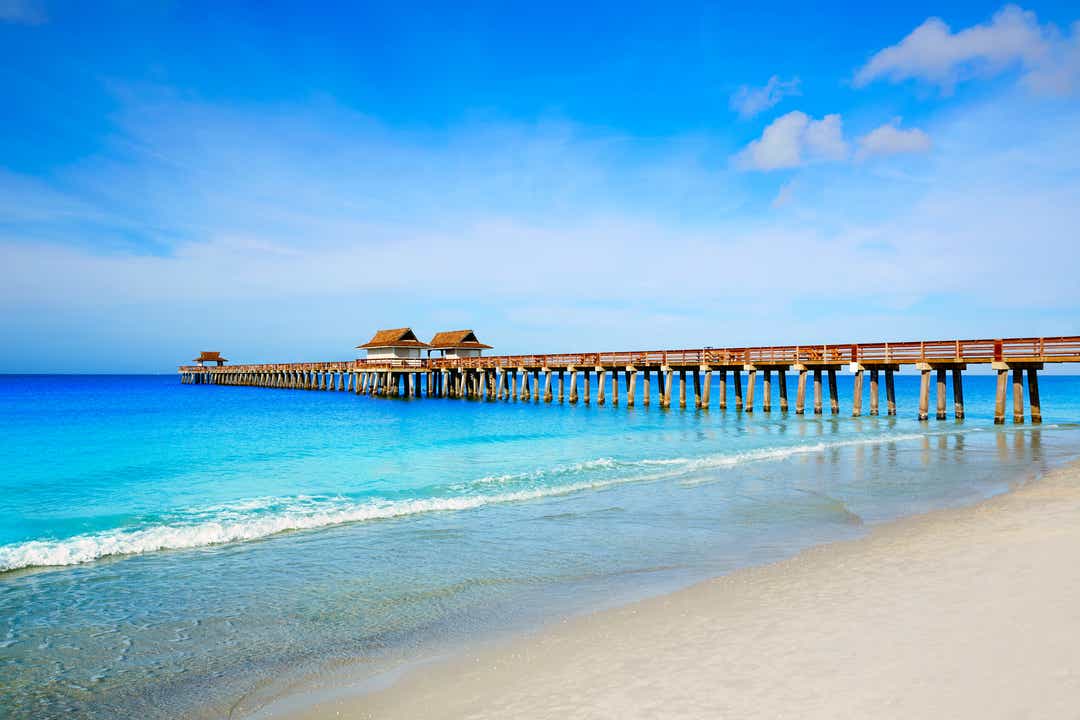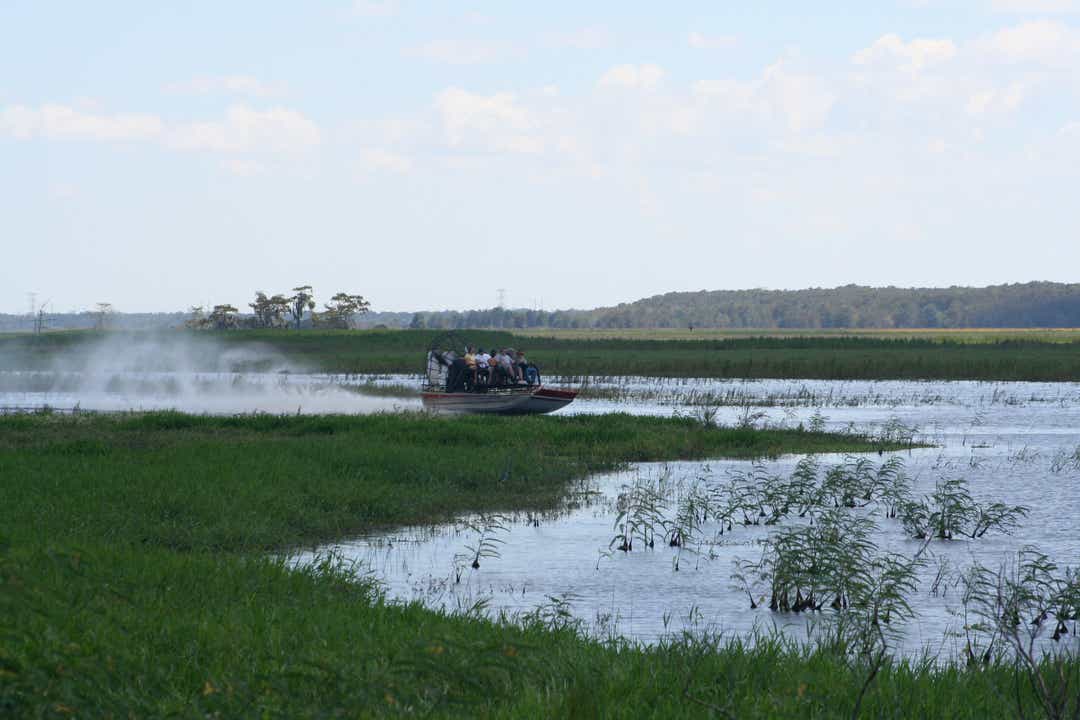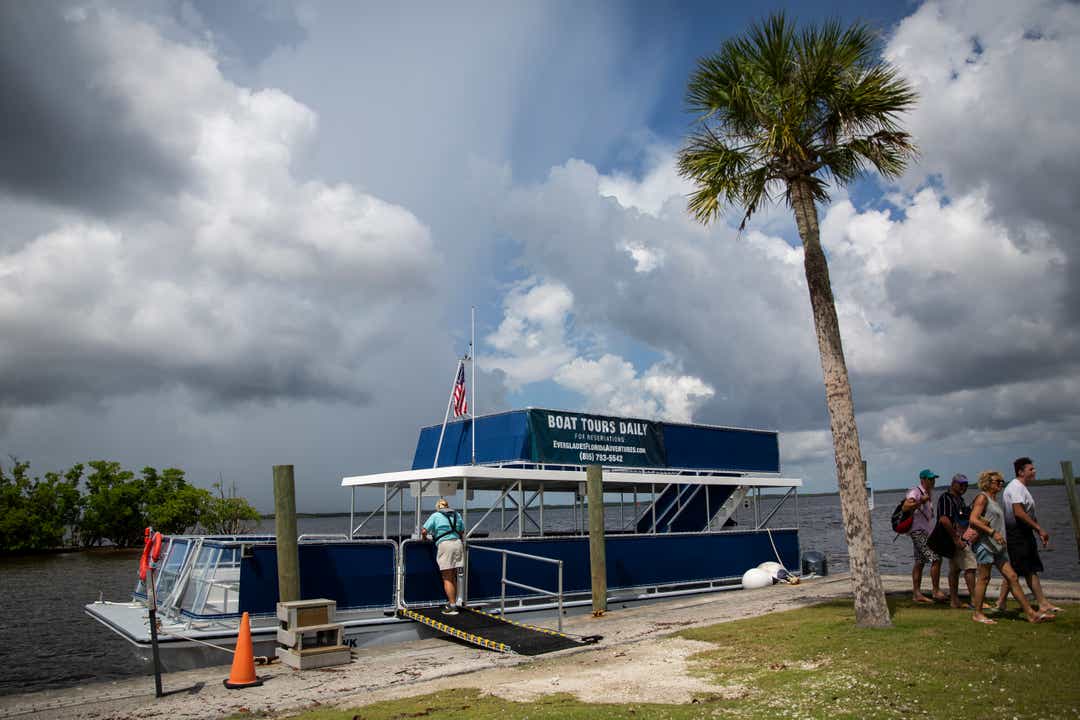Tourism picture in Southwest Florida brightens in June, but dark clouds loom with rise in coronavirus cases
Laura Layden Naples Daily News
Published 3:47 PM EDT Jul 31, 2020
Collier County's tourism industry brightened a bit in June.
Dark clouds still loomed, however, amid the coronavirus pandemic — and those clouds darkened in July, with signs of a pullback in demand after a rise in COVID-19 cases statewide.
"I have been watching occupancy on a weekly basis, and it has come down some from where we were. I'm sure that has something to do with the additional cases being recorded here in Florida," said Jack Wert, Collier County's tourism director.
Lee County's tourism industry has also been hard hit by the pandemic. Its next report will be available in about two weeks.
In June, most of the metrics used to track the local tourism industry's performance fell by double digits from where they stood a year ago.
But those metrics looked much better than they did just a month earlier.
"There was some improvement. That was nice to see," Wert said.
In other news: After hitting 'rock bottom' in April amid the coronavirus pandemic, SWFL's airports have seen an uptick in passenger demand
In June, Collier County — including Naples, Marco Island and Immokalee — saw 115,600 visitors staying in its hotels or other vacation rentals. That was down by 22.5% over the same month last year — but a more than 131% increase from May, according to the latest report by Tampa-based Research Data Services, a county consultant.
In May, the county drew less than 50,000 visitors — and April looked much worse, with many of the businesses in the county — and state — temporarily closed due to government orders that encouraged Floridians to only go out for essential services and shuttered many non-essential businesses — or severely limited their services.
In other news: Employees at more Southwest Florida grocery store locations test positive for coronavirus
In a survey, Research Data Services found that 40% of Collier's hotels and resorts were either closed or had zero occupancy in April. By June, most properties had reopened with visitor demand picking up.
In April visitation fell by 92.2% over the year. So it's come a long way since then.
Similar statistics aren't available in Lee County, but its tourism industry has also suffered greatly from the impacts of the pandemic. The next tourism report — done quarterly — won't be out until Aug. 13.
However, the county's report for January through March, showed how a possible record quarter was ambushed by COVID-19, causing double-digit drops in visitor numbers, room nights booked and total tourism spending.
A report by research firm STR showed occupancy at 44.7% for the week of July 19-25 in Lee — down by more than 31% from a year ago.
Positive movement
Research Data Services shared its latest monthly report at a Collier County Tourist Development Council meeting Monday.
Here's a look at some of the other metrics for June in the county, when compared to a year ago:
- Room nights booked fell by more than 30% to 130,700.
- Total spending declined by more than 25% to less than $120.4 million.
- Occupancy dropped by 37% to 41%.
- Revenue per available room decreased by nearly 30% to $91.18.
The county saw much bigger year-over-year drops in occupancy in May (-64.3%) and April (-89.9%).
"You can see significant movement, positive movement," said Ann Wittine, director of data analysis for Research Data Services. "And from everything we've heard that movement extended into the beginning of July and through Fourth of July weekend — and even the second week of July things were still strong."
By the way: Lawsuit alleges 'massive corporate scandal' at Hertz involving false car rental theft reports
Another bright note? The average daily rate in the county rose 10.5% over the year to nearly $220 in June — showing the strength of its reputation as a luxury destination. Based on that metric, the county outperformed many of its competing markets in Florida, including Miami, Palm Beach and Clearwater.
"Once you drop that, it's very hard to build it back up again," Wittine said of the rates. "So that is also a positive sign."
Changing tides
While there were many positive signs in June, pointing to a recovery, Wittine — like Wert — warned of changing tides in travel demand due to Florida's recent surge in cases of COVID-19, the disease caused by the coronavirus.
Up until recently, Wittine said her firm's travel sentiment survey showed surprisingly little effect from the spike, but that has clearly shifted in recent weeks.
"We are still seeing similar numbers of people saying that they are interested in traveling, but we have become a little bit less of a desirable category and we even had people saying things like: 'I'd like to go to Florida, but I'm unwilling to go now,'" she said.
Other business news: Southwest Florida virtual job fair provides 'visibility', sees high demand during coronavirus pandemic
Plus: Uncertainty looms for unemployed in Southwest Florida as $600 weekly benefit expires
In a weekly survey that wrapped up July 26, 44.5% of participants said they wouldn't be interested in visiting any destination in Florida at this point.
"It isn't that people's interest in travel is changing," Wittine said. "What we are seeing though is that Florida is becoming less desirable as people are hearing news that we are becoming more of a hot spot. It does raise some flags."
COVID-19 isn't the only factor affecting hotel occupancy in Collier County.
The inventory of hotel rooms and other vacation rentals, including single-family homes and condos, has been on the rise too. As of June, the number of licensed lodging units in the county stood at 11,074 — up 10.5% from a year ago.
"Not only are we dealing with demand issues, there's also more to sell," Wittine said. "So that's impacting occupancy as well and that's an important consideration."

She praised Collier County's tourism bureau and its marketing partners for quickly pivoting to deal with the pandemic by focusing even more on attracting the drive market — especially other Floridians, who live two to three hours away.
In June, the county saw more than 93,000 visitors from other parts of the state. That was a more than 28% increase over the same month last year.
Otherwise, the county saw fewer visitors from all of its other top feeder markets, compared to last year. Visitor numbers dropped to zero from Canada and Europe in June, due to travel restrictions and changes in air service tied to the pandemic.
Groups gone
STR reports continue to show how the global health crisis has hurt the groups and meetings business across Florida, especially in Southwest Florida.
In June, the occupancy for group business fell by 93% in Collier County — or the Naples area — and by 89.2% in the Fort Myers area — or Lee County — year over year. Competitive markets in Florida also saw huge declines, including the Keys, Miami and St. Petersburg.
"Group is still very low," Wittine said.
Research Data Services also shared statistics for the first six months of the year at the Tourist Development Council meeting, showing the wider impacts from COVID-19 in Collier County.

Here's what those metrics look like when compared to the first half of last year:
- 748,600 visitors, down 31.2%
- 952,000 room nights, down 31.7%
- $930,097,600 in total spending, down 35.4%
An STR report shows occupancy falling by 33.5% for the months of January to June in Collier over the year — and a slightly smaller drop in Lee County at 31.6%.
Tourism jobs have been returning in Southwest Florida, with the economy opening back up in the region — and statewide.
According to state data, the leisure and hospitality industry in Collier directly employed 22,800 workers in June. That was up from 20,700 in May, but down from 28,400 a year ago.
In Lee, the industry employed 34,900 in June — also up noticeably from May — but still down by more than 16% from 41,700 a year ago.
Like many companies, hotels and other tourism-related businesses have been forced to make layoffs or institute furloughs to get through the crisis.
A furlough is different than a layoff because it's meant to be temporary, pausing workers' pay without letting them go and usually preserving their benefits.

Jobs uncertain
With more signs of uncertainty stemming from the surge in COVID-19 cases, future employment in the tourism industry has become a little less clear.
Since last week, two local employers tied to the industry have filed Worker Adjustment and Retraining Notifications — or WARN notices — about temporary job cuts that could become permanent.
One of those employers is the landmark Naples Beach Hotel & Golf Club. In the notice, Patsy Carbone, human resources director, said the hotel has extended furloughs for 90 of its employees to Sept. 26 — and anyone who isn't called back by then will be "terminated on that date."
"The layoffs should be considered permanent and are due to the sudden and dramatic loss of business caused by the novel coronavirus pandemic and the resulting cancellation of hotel reservations, the prohibition against meetings and gatherings, the reluctance of the general public to gather in large groups or to travel and the recent spike in COVID-19 cases throughout the United States, which will exacerbate and extend the highly unfavorable business climate for the hotel," she said.
The job cuts could affect all types of employees from managers and supervisors to servers and housekeepers.
In Fort Myers, Paradies-Shell Factory, which operates a retail store at Southwest Florida International Airport, warned that temporary layoffs that began in late March could last longer than six months.
The layoffs involve 81 employees. A little over half of them are sales clerks, according to a letter by Rachel Berta, the store's general manager, sent to local and state officials.
"While we had originally hoped that those associates' temporary layoff status would be brief, due to the fluidity of the situation surrounding COVID-19 and the reopening of the economy, we are not able to predict exactly when those associates will be able to return to work," she said.
Phase two of Florida’s recovery plan took effect June 5, except in Miami-Dade, Broward and Palm Beach counties. According to the plan, Florida won't be ready to enter phase three — or the final phase — until there is "no evidence of a rebound or resurgence of COVID-19 cases."
The final phase will allow all businesses to once again operate at full throttle — and lift all travel-related restrictions.
tinyurlis.gdv.gdv.htclck.ruulvis.net
